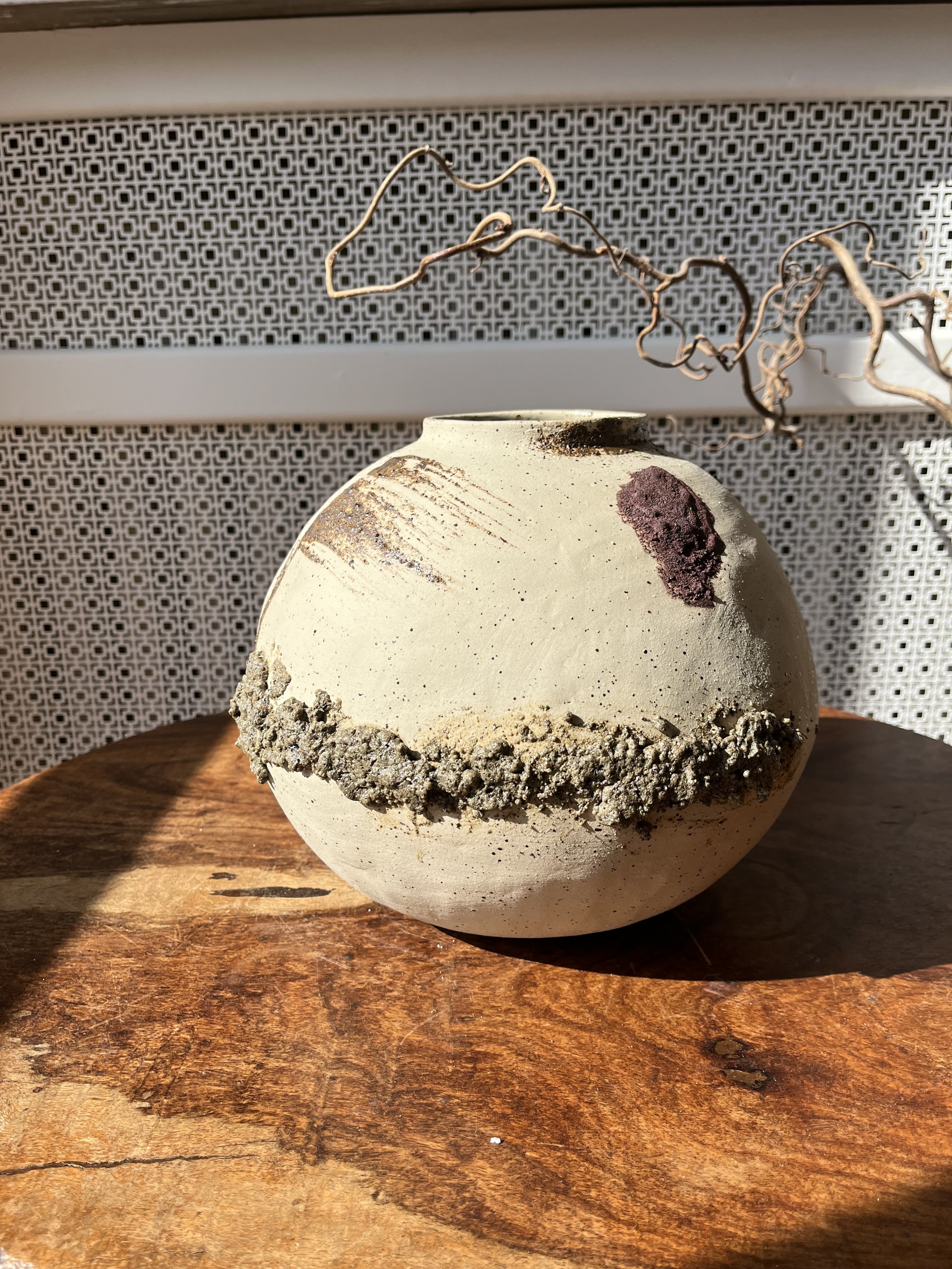The Lucia vase
The Lucia vase was made with white clay mixed with basalt, and painted with wild Bentonite from Sardegna, wild ochre from Bruxelles, and a smashed rock from North Berwick beach, Scotland. The ochre was the first material I ever harvested in the wild and was found within the roots of a fallen tree in the Sonian forest.
The textural qualities are inspired by ancient vessels and the degradation process they go through during millennia. Much of the pottery we have today in our museums was found underground and in tombs, often in shards, with cracks and heavily layered, through both the original decoration and firing process, but also the compaction of various soils in time. The vessels in the decay collection try to recreate this process with heavy layering of clays, rocks, sands and ochres.
This vase has been fired to 1250 C and is watertight.
This vase is part of the Decay collection.
The Lucia vase was made with white clay mixed with basalt, and painted with wild Bentonite from Sardegna, wild ochre from Bruxelles, and a smashed rock from North Berwick beach, Scotland. The ochre was the first material I ever harvested in the wild and was found within the roots of a fallen tree in the Sonian forest.
The textural qualities are inspired by ancient vessels and the degradation process they go through during millennia. Much of the pottery we have today in our museums was found underground and in tombs, often in shards, with cracks and heavily layered, through both the original decoration and firing process, but also the compaction of various soils in time. The vessels in the decay collection try to recreate this process with heavy layering of clays, rocks, sands and ochres.
This vase has been fired to 1250 C and is watertight.
This vase is part of the Decay collection.
The Lucia vase was made with white clay mixed with basalt, and painted with wild Bentonite from Sardegna, wild ochre from Bruxelles, and a smashed rock from North Berwick beach, Scotland. The ochre was the first material I ever harvested in the wild and was found within the roots of a fallen tree in the Sonian forest.
The textural qualities are inspired by ancient vessels and the degradation process they go through during millennia. Much of the pottery we have today in our museums was found underground and in tombs, often in shards, with cracks and heavily layered, through both the original decoration and firing process, but also the compaction of various soils in time. The vessels in the decay collection try to recreate this process with heavy layering of clays, rocks, sands and ochres.
This vase has been fired to 1250 C and is watertight.
This vase is part of the Decay collection.

